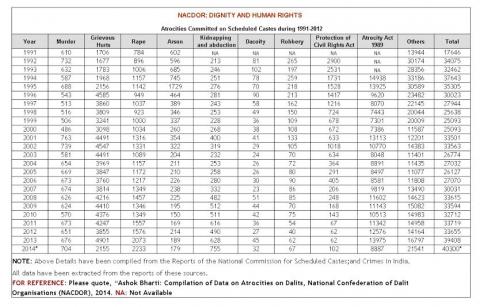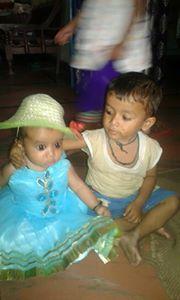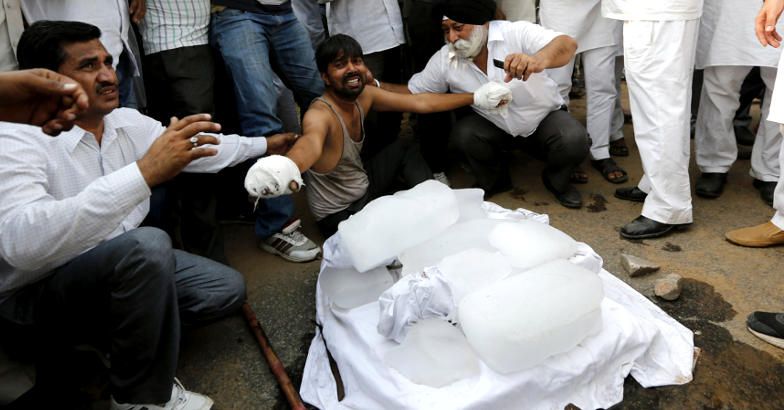
International media remained haunted and a debate stirred when picture of Aylan Kurdi reminded the population across globe of the Syrian refugee crisis.
Shockingly enough, a similar response and empathy was missing in the public discourse that followed after images of two Dalit toddlers who were charred to death in their home last week in a village in Faridabad, surfaced in the national media.
Like the refugee crisis, India is also faced with the ‘Dalit’ crisis that we have been ignoring from long. Rising incidents of atrocities on Dalits, ‘Children of the lesser god’, have often pushed activists and thinkers to ask if ‘social equality guaranteed in the constitution is just a myth.
Figures revealed by the Nation Confederation of Dalit Rights (NACDOR), apex body of Dalit organisations in India show that between 1991 and 2014, a total of 13,766 Dalits have been murdered and 76,860 have been grievously injured. The statistics also highlight that a total of 32,956 Dalit women have been raped. In the past three decades, the figures say that 6,74,619 cases of crimes against Dalits have been registered.

Quoting father of the Indian Constitution, Ashok Bharti, Chairman, NACDOR, stresses, “Dr Ambedkar had said that a law can’t be implemented unless a social conscience is constructed to accept it. An awakened Dalit who asks for his rights is still an eyesore for the society. The institution created to safeguard their interests has failed miserably. An example of this failure is that till date, not a single report of Scheduled Castes Commission has been presented in Lok Sabha. Commissions are spending crores in name of Dalit welfare, but only on papers.” Bharti advocates that in order to bring a major visible change, these commissions, including those taking care of scheduled caste communities, minorities or women, should function like professional bodies without any political interference.
In Haryana, according to the NACDOR data, a total of 3,198 cases of atrocities on Dalits have been registered between 2004 and 2013 as against 1,305 cases recorded from 1994 to 2003.
 An older photo of the two todllers who were in the house set on fire - File photo
An older photo of the two todllers who were in the house set on fire - File photo
Hate crimes against the community have been grabbing headlines time and again. Recent killing of two toddlers in Sunped village of Faridabad and death of minor in Gohana village under police custody are also being viewed as cases of anti-Dalit crimes.
“Haryana is among the most infamous states as far as atrocities against this particular community are concerned. Between 2011 and 2014, a total of 92 Dalit murders have been registered, while as per police records, a total of 365 Dalit women have been raped. Atrocities happen in other states too, but since Haryana’s population is low (2.54 crore) with fair share of Dalit population (around 50 lakh (20 percent), the numbers should make anybody sit up and take notice. Our constitution says Dalit should be guaranteed equal rights, but we need to develop national conscience to ensure equality for all,” insists Bharti.
“For upper caste men, it’s not unusual to objectify Dalit women”. After the family of four was set ablaze in their home in Sunped village, large number of Dalits took to streets and threatened to convert to other religions if their voice was not heard.
As iamin spoke to a few women of the community, they claimed how everyday they were trying very hard to escape sexual harassment meted out to them by the upper-caste men.
In many rural pockets of the state, Dalit women have often been subjected to similar treatment, allege several NGO activists iamin subsequently spoke to.
A ‘popular’ proverb in rural households in Haryana with a hint of sexism and objectification - ‘Gareeb Ki Lugai, Sabki Bhabhi’ (A poor man’s wife is everyone’s sister-in-law) largely explains the basis of such a mindset. “Only 10 percent of sexual assault cases get registered because right from a constable to SHO, even the SP belongs to upper caste. Most of the cases don’t even reach police stations. Dalit households are still in outskirts of villages and they are still untouchable except their women often become victims of sexual advances of the upper-caste men,” sums up Rajat Kalsan, an advocate who fought cases for Bhagana and Mirchpur victims.

Jitendra sits helplessly with the bodies of his two children wrapped in white and placed on ice - Reuters
Lack of social status has been an important factor that has further marginalised the community, say experts.
“Successive governments in India have failed to take care of providing adequate resources to the members of the community,” says Bharti while mentioning three important observations why Dalits are still being targeted in incidents of casteist violence.
“Even today, they are forced to work as bonded labourers because they have no land of their own,” he says.
“Secondly, absence of social conscience can also be blamed for their present condition,” points out Bharti.
Last but not the least, absence of an effective mechanism and institutions which safeguard Dalit’s right to equality has only resulted in further oppression of community, he opines.
Agreeing to the observations, social activist Rajesh Kumar who works with NGO, National Campaign for Dalit Human Rights (NCDHR) in Panipat, further stresses upon the need of land reforms. “At present, nearly 85 percent of the land holdings in the state are with upper caste people Jats. Dalits, on contrary, have only 2 percent share despite constituting of over 20 percent of the state population. It’s strange but true how a man is judged by acres of lands he owns in states like Haryana and Punjab. Sadly, the Dalit community owns none,” Kumar insists.
It may be noted that the situation is quite similar in neighbouring state Punjab where Scheduled caste community constitutes of over 32 percent population, as per 2011 census. However, according to official records, the percentage of land owned by them is comparatively much lesser.
For the longer version of the report, click here